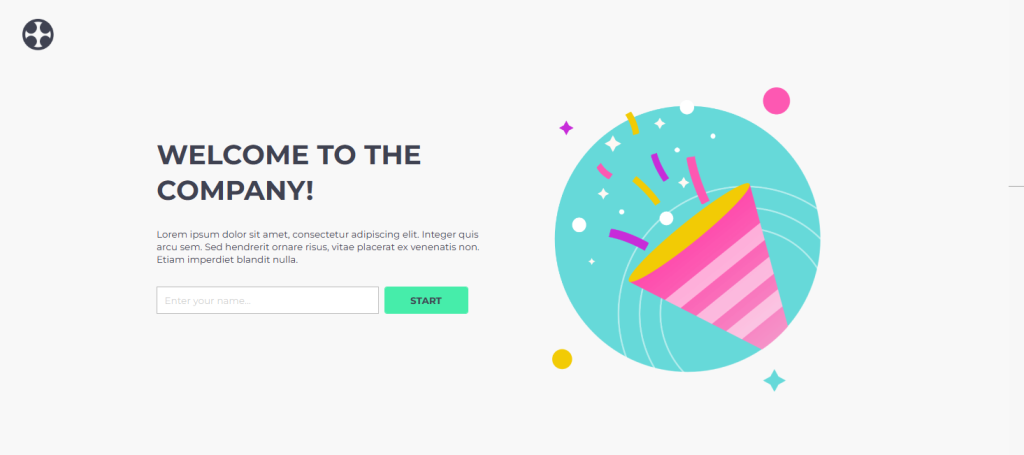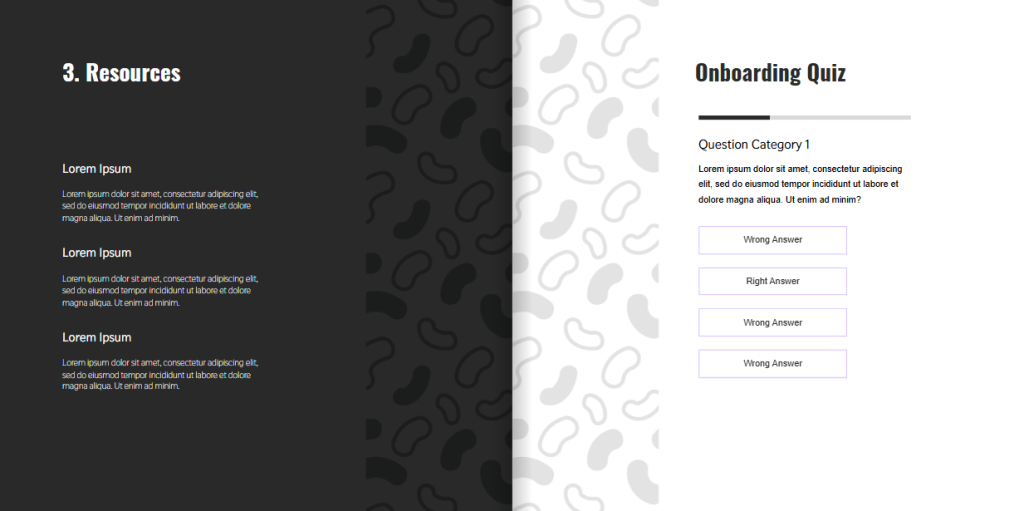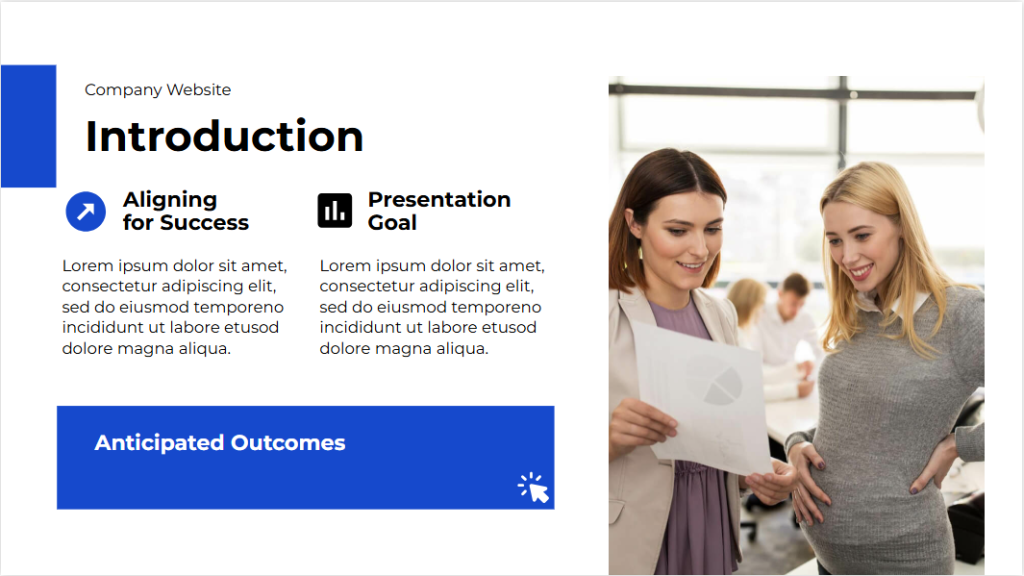
In this age, internal communication strategy is not just about sending updates or emails. It’s about creating a streamlined process and building trust with your team.
Imagine this: a significant update is emailed to all team members, but a few miss the email because it goes to their junk folder or is buried in their inbox. This isn’t just frustrating, but it’s costly to the company. When communication is not streamlined, it brings down the team’s morale and productivity.
Recent statistics show that, with better communication and tools, employees” productivity can increase by 30%. That’s why it’s time to ditch the email and explore more innovative ways to bring up your internal communication strategy and improve your team’s momentum.
- What is Internal Communication Strategy?
- The Problem: One-way Communication is broken
- The Solution: Incorporate Interactivity
- How to Build an Internal Communication Strategy That Works
- Using Dot.vu’s Platform for Internal Communication Strategy – It’s Easier Than You Think
- Ready to Transform Your Internal Communication Strategy?
What is Internal Communication Strategy?
Internal communication strategy is the process of conveying the company’s objectives or plans to its employees. This is a crucial strategy for companies, as not having it would open the floor to misinterpretation and bad information going around. Having a plan when companies communicate internally is essential to ensure a proper team structure.
The 3 main type of Internal communication are:
- Top-Down Communication: When a company’s CEO would like to make an announcement to their employees, such as Town hall Meetings or company-wide announcements.
- Bottom-Up Communication: When an employee would like to raise a concern or provide feedback to their manager or someone above it.
- Peer to Peer Communication: When teams or colleagues would like to share information or communicate among themself.
The Problem: One-way Communication is broken
According to a recent survey, 40% of employees reported feeling disengaged and isolated in their workplace, which may lead to employee turnover. Employees may feel hesitant to voice their concerns. This usually leads to burnout or stress. Hence, it’s crucial to create an inviting workplace environment.
For years, companies have followed a familiar path to convey internal communication. Information flows from top to bottom. But if your strategy is only about delivering a message and not listening or engaging, it’s not communication, it’s broadcasting, and that area is breaking down fast.
One-way communication creates gaps by assuming that everyone interprets a message the same way, which isn’t true. A study shows that 61% of employees consider changing their jobs due to poor internal communication.
The Solution: Incorporate Interactivity
Interactive Content can invite employees to be more engaging and feel involved. Rather than just reading static content, your employees can actively participate. This format encourages involvement through clickable graphics, videos with shoppable or branching logic, Quizzes, and Surveys.
Interactive Content gives users control, choice, and ownership over the experience by transforming one-way communication into a two-way conversation.
Interactivity also captures users’ attention as this type of content requires user input. Encouraging them to click or rate makes them far more likely to stay focused. Let’s take onboarding modules as an example. When a new employee joins, you can incorporate a poll or survey into the module to learn more about your employee.
How to Build an Internal Communication Strategy That Works
Let’s ditch the objective of getting a message across and focus on ensuring that messages are understood and acted upon in this age. Here is a dynamic approach that delivers results:
1. Listen First – Use Surveys & Feedback Forms
The foundation of any strong communication strategy is listening. Before you send out any announcement or messages, collect input from your employees to understand how they truly feel about it. There is an easy way of doing this without using Google Docs or Email. You can create an interactive feedback experience using Dot.vu’s Survey templates.
Whether it’s after a town hall meeting or onboarding, you can gather richer and more insightful data and increase the completion rate by using Interactive Content.

2. Segment Your Audience – Not Everyone Needs Everything
It’s easy to brush off a manual that does not relate to your employee’s position. Someone in sales doesn’t need the same information as an employee in HR or IT. It just doesn’t relate to them. If your guides or manual includes everybody’s job information, then it’s highly likely they may miss out on specific details about their role.
To overcome this issue, you can use Dot.vu’s personalization and conditional logic to create a role-specific onboarding experience, whether it’s an Interactive Video or an Interactive Flipbook. You can now allow your employees to choose their journey in this content.
This also makes every communication feel relevant and respectful of the employees’ time.

3. Use The Right Tools – Including Interactive Experience
The standard tools like emails, Zoom, and Slack are helpful, but they’re not enough. Imagine having to scroll through your entire chat to find your desired content. This consumes time, and work gets piled up.
With Dot.vu’s Interactive Content, you create an experience based on the objective you set:
- Gamified Content—Send updates using the Wheel of Fortune template or a tapping game to entertain employees and boost team morale.
- Leadership Q&A Hubs– Employees can check out the Q&A Page during their free time or if they have any questions.
- Interactive Presentation– Embed interactive elements into your Interactive Presentation to capture attention and collect real-time data.
Want to explore more? Check out these 10 Creative Presentation Ideas to spark inspiration and take your next project to the next level!
These formats encourage engagement and are crucial to building a strong team alignment.

4. Measure What Matters – Clicks, Views and Feedbacks
Strategies are known to evolve. It never remains the same. According to research, only 30% of organizations are confident that their internal communication strategy is effective. This indicates that regular review of their strategy is needed.
With Dot.vu’s data all stored in one place, you can now monitor what works and change what does not. Improving your content has never been more straightforward. With a simple edit, you can now make modifications to your messaging, formats, or even frequency.
Using Dot.vu’s Platform for Internal Communication Strategy – It’s Easier Than You Think
With the workload, creating internal communication content from scratch must be hectic. This is why most communication is sent through email. That said, what if you don’t have to do that anymore? With over 300+ templates, you can pick the right interactive experience based on your objective.
Besides the templates, Dot.vu’s building blocks allow you to personalize your content using the Building Blocks in the Editor with a simple drag-and-drop feature. Moreover, you can customize your internal communication strategy with two editing options: Quick Editor and Advanced Editor.
You don’t need to be a designer to use this platform, as you don’t need to have any coding or design background. Just choose your elements, customize your branding, and go live within minutes. Even HRs and Sales can join in the fun now.
Ready to Transform Your Internal Communication Strategy?
Your employees deserve better communication. This strategy isn’t just about delivering a message; it’s about building a deeper connection with them. Building a strong foundation of communication can not only boost morale but also improve productivity.
You don’t need to incorporate all the experiences. Just start with one and watch the magic. You will notice a shift in engagement, feedback, and culture.
Whether you are looking to modernize your presentation, improve the onboarding process, or find an effective way to collect feedback, Dot.vu makes it easy to elevate your internal communication with Interactive Experiences that actually connect.
Let’s go ahead and make internal communication something your employees actually look forward to. Try it out yourself with the 14-day free trial and explore over 300+ templates.



